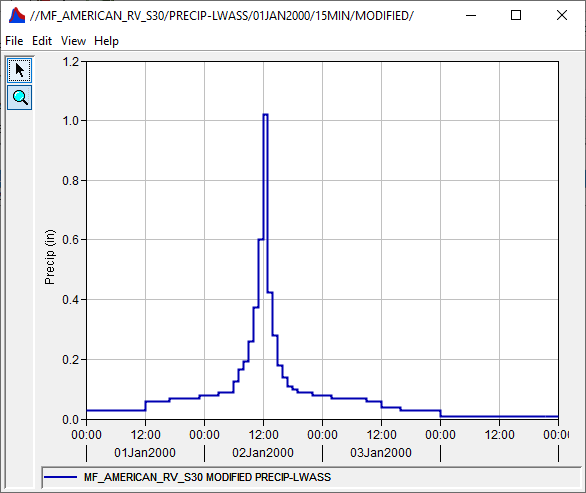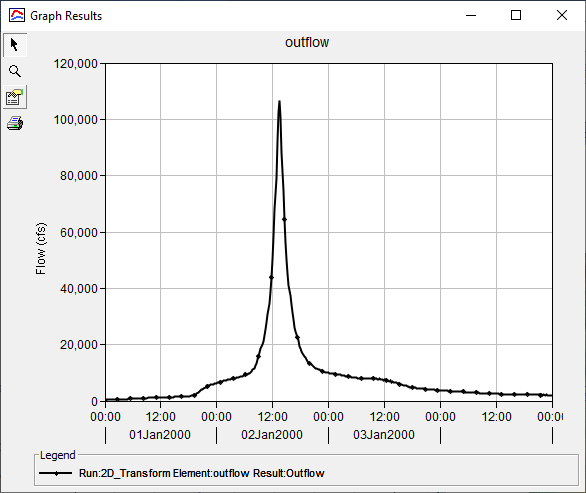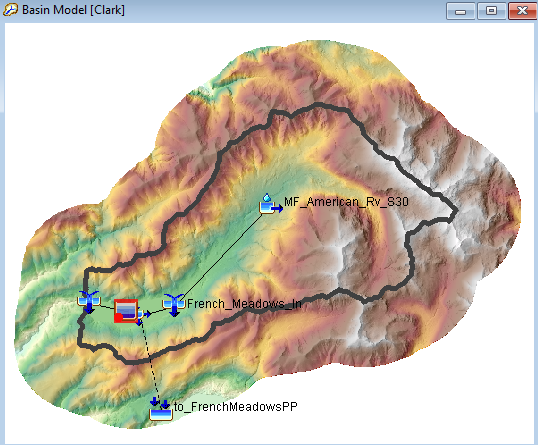Unit Hydrograph Theory
Unit hydrograph theory is a technique for modeling the transformation of excess precipitation to runoff at the watershed scale. When the watershed is gaged with both observed rainfall and flow data available for a storm event, the unit hydrograph relationship can be derived directly. When the watershed is ungaged, the unit hydrograph relationship cannot be derived directly; therefore, many synthetic unit hydrograph methods have been developed to help with ungaged watersheds (though not limited for use to just ungaged watersheds). HEC-HMS contains six different unit hydrograph methods. Within this workshop, the Clark/ModClark unit hydrograph method is applied.
Overview
In this workshop, you will become familiar with the Variable Clark unit hydrograph method that is available within HEC-HMS. Specifically, you will:
- Estimate Clark Transform Parameters using Task 5 Regression Equations.
- Calibrate Clark parameters using an Historical Event.
- Simulate precipitation-runoff for a hypothetical event using Clark parameters.
- Estimate Variable Clark Transform Parameters using Task 8 Regression Equations.
- Simulate precipitation-runoff for a hypothetical event using Variable Clark method and compare results against those obtained through the use of the "regular" Clark and 2D Diffusion Wave methods.
Questions will be provided throughout the workshop.
Background
In this tutorial group, the study area is designated as the Middle Fork American River watershed upstream of the French Meadows Reservoir near Foresthill, CA. This study area was detailed here.
Data
A hypothetical event occurring over a 4-day time period will be simulated within this workshop.
Liquid Water at the Soil Surface
A Liquid Water at the Soil Surface (LWASS) time series, based upon the time series generated within the Computing a PMF/Statistical Event Simulation and Analyzing Results workshop, will be used as the meteorologic boundary conditions within this workshop. Within this hypothetical event, approximately 30 inches of LWASS were realized, as shown in the following figure.

Observed Data
The 2D Diffusion Wave transform method was used to generate results from the hypothetical event, as shown in the following image. These results will be compared against those generated using the Clark and Variable Clark unit hydrograph methods.

Model Configuration
An HEC-HMS project named "Variable_Clark_Workshop" has already been created for you. This HEC-HMS project contains two basin models, two meteorologic models, and two control specifications. As shown in the following figure, within both the basin models, there is one subbasin element named "MF_American_Rv_S30" along with two junction elements named "French_Meadows_In" and "French_Meadows_Out", one reservoir element named "French_Meadows_Reservoir", one diversion element named "FrenchMeadows_PP_div", and one sink element named "to_FrenchMeadows_PP". This subbasin was originally delineated using terrain data downloaded from the USGS National Map Viewer.

The subbasin element was configured to use the Deficit and Constant loss method, the Clark unit hydrograph transform method, and the Linear Reservoir baseflow method. The diversion element was configured to use the Constant Flow diversion method. A constant diversion of 500 cfs was specified. The reservoir element was configured to use the Outflow Curve method. Elevation-storage and storage-discharge relationships detailed here were selected for use. Finally, the previously-mentioned 2D Diffusion Wave results were linked to the French_Meadows_In junction element for comparison when simulating the hypothetical event.